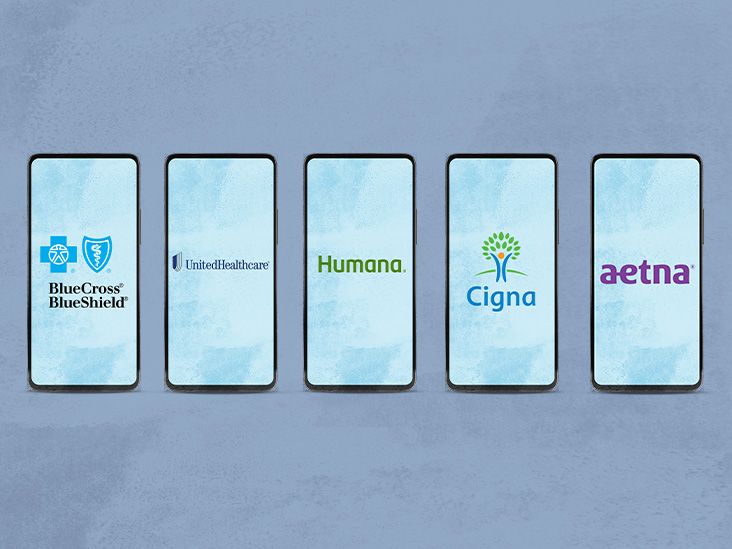Hey there! You're probably here because Medicare's language feels like it's written in a foreign code, right? I totally get it we've all been there, staring at those confusing documents wondering what on earth a 'donut hole' actually means when it comes to our health coverage.
Instead of sifting through those intimidating government booklets or taking wild guesses, let's break down the most important Medicare terms together. This isn't some snooze-fest legal dictionary it's the real talk you need to make smart decisions about your health and your wallet.
Trust me, once we walk through these definitions, you'll feel way more confident about navigating Medicare. Ready to turn confusion into clarity? Let's dive in!
Understanding Key Terms
What Is the Medicare Donut Hole?
Okay, let's tackle one of the most confusing parts first that dreaded "donut hole." So what exactly is this mysterious coverage gap in Medicare Part D?
Think of it like this: Imagine your prescription drug coverage as a bucket with a hole in the middle. At first, your insurance covers most of your medication costs. Then suddenly, you hit this gap where you're paying a much bigger chunk out of your own pocket. It's like walking through a tunnel where you can't see the light at the end.
Here's how it works: You start with initial coverage (yay, insurance helps!), then hit the coverage gap (uh-oh, more out-of-pocket costs), and finally reach catastrophic coverage (phew, insurance helps again big time).
Let me paint a real-world picture for you. Say you're taking a brand-name diabetes medication that costs $300 per month. In the initial coverage phase, you might pay $20 and insurance covers the rest. But once you hit the donut hole, you might be responsible for $150 of that cost ouch!
The good news? Over the years, this gap has been getting smaller thanks to legislative changes. Back in 2010, you were paying about 100% of brand-name drug costs during the gap. By 2025, that's down to about 25%. That's progress we can celebrate!
What Is Original Medicare?
You've probably heard "Original Medicare" thrown around, but is it actually a plan? Well, sort of. It's more like the foundation upon which other Medicare options are built.
Original Medicare is basically the government-run program that includes two main parts:
- Part A: Hospital insurance (covers stays in hospitals, skilled nursing facilities, hospice care, and some home health care)
- Part B: Medical insurance (covers doctor visits, outpatient care, medical supplies, and preventive services)
Here's the thing Original Medicare works pretty well if you're relatively healthy and don't mind paying some costs out of pocket. But there are gaps. For instance, it doesn't cover prescription drugs (that's Part D), and you'll have to pay deductibles and coinsurance.
When does Original Medicare make the most sense? Probably if you travel frequently it works anywhere in the U.S. where Medicare is accepted. But if you want more comprehensive coverage with additional benefits like dental and vision, you might want to consider other options.
What Is a Medicare Part D Plan?
Let's talk about something that affects almost everyone prescription drug coverage. Medicare Part D plans can feel overwhelming with all their fancy terms, but I promise it's simpler than it seems.
Part D is essentially prescription drug insurance, and it comes in two flavors:
- Standalone Prescription Drug Plans (PDPs) you keep Original Medicare and add this for drug coverage
- Medicare Advantage Plans with drug coverage (MA-PDs) these include medical, hospital, and drug coverage all in one
Now, here's where things get interesting. Each plan has something called a "formulary" that's just a fancy word for the list of drugs the plan covers. These formularies are organized into "tiers," which determine how much you'll pay for each medication.
Want to save yourself some serious headaches and money? Make sure any medications you currently take are covered by whatever Part D plan you choose. Trust me, checking this before you enroll can save you hundreds (or even thousands) of dollars later.
Understanding Catastrophic Coverage
Okay, here's some good news that often gets overlooked catastrophic coverage. It sounds scary, but it's actually your saving grace when medication costs start piling up.
Think of catastrophic coverage like a superhero cape that kicks in when you've spent enough money on drugs in a year. Once you hit what's called the "True Out-of-Pocket" (TrOOP) threshold, Medicare starts covering almost all of your prescription costs for the rest of the year.
What counts toward your TrOOP? Your deductible, copayments, and coinsurance all add up. But here's something important the manufacturer discounts you get on brand-name drugs during the donut hole also count toward your TrOOP. That's helpful because it means you're getting closer to that magical point where catastrophic coverage kicks in.
The threshold changes each year for 2024, it's $7,400. Once you hit that amount in out-of-pocket costs for covered drugs, you only pay either a small copay or coinsurance (usually about 5%) for the rest of the year. That's huge relief for people taking expensive medications.
But here's something you should know these limits reset every year. So even if you hit catastrophic coverage in December, you start over at zero when the new year begins. Plan accordingly!
What Are Medicare Advantage Plans?
Medicare Advantage plans have gotten a lot of buzz lately, and for good reason. They bundle your medical, hospital, and often prescription drug coverage into one plan through private insurance companies.
Here's the appeal: Many of these plans throw in extra benefits like dental, vision, hearing, and gym memberships. It's like getting a bonus package with your main coverage. Plus, they often have lower out-of-pocket maximums than Original Medicare plus Medigap.
But and this is a big but there's usually a trade-off. Most Medicare Advantage plans have networks, which means you need to see providers who accept the plan. Move to a new area? You might need to switch doctors. That can be frustrating if you have a beloved physician you don't want to leave.
There are different types of Medicare Advantage plans, each with their own rules:
- HMOs (Health Maintenance Organizations) typically require referrals to see specialists
- PPOs (Preferred Provider Organizations) more flexibility but potentially higher costs
- PFFS (Private Fee-for-Service) you can see any provider who accepts the plan's payment terms
- SNPs (Special Needs Plans) for people with specific chronic conditions or those eligible for Medicaid
The enrollment periods for these plans can be tricky, so mark your calendar. The main Annual Enrollment Period runs from October 15 to December 7 each year. But there are also special enrollment periods for qualifying life events.
What Are Medicare Savings Programs?
This is one of those "hidden gems" in the Medicare world that too many people don't know about. Medicare Savings Programs (MSPs) are state-run programs that help people with limited income and resources pay their Medicare costs.
Depending on your income level, these programs can help pay:
- Your Medicare Part B premium
- Your Medicare Part A premium (if you pay one)
- Your Medicare deductibles, copayments, and coinsurance
There are different levels of help available based on your income:
- QMB (Qualified Medicare Beneficiary) covers all Medicare premiums, deductibles, copayments, and coinsurance
- SLMB (Specified Low-Income Medicare Beneficiary) covers Part B premiums only
- ALMB (Additional Low-Income Medicare Beneficiary) covers Part B premiums only, for those with slightly higher incomes than SLMB
Here's the thing you might be eligible for these programs and not even know it. Income limits change each year, and some people are automatically enrolled if they already receive Medicaid or Supplemental Security Income.
I love this quote I heard from someone who went through this process: "I was shocked when my local counselor said I qualified for help. I had no idea these programs even existed!" That's why it's worth checking into, even if you think you might not qualify.
Can You Switch Plans Later?
Here's some reassuring news yes, you can switch your Medicare plans, but timing really matters. Medicare has specific periods when you can make changes, but there are exceptions for life events.
The main Annual Enrollment Period (AEP) runs from October 15 to December 7 each year. This is when you can switch from Original Medicare to a Medicare Advantage plan, switch between Medicare Advantage plans, or change your prescription drug coverage.
But what if something changes in your life outside of this period? That's where Special Enrollment Periods (SEPs) come in. Qualifying events include:
- Moving outside your plan's service area
- Entering or leaving a Medicare-approved nursing home
- Becoming eligible for Medicaid or losing Medicaid eligibility
- Losing other creditable prescription drug coverage
- Being enrolled in a plan that's leaving Medicare
There's also something called the Medicare Advantage Open Enrollment Period (January 1 to March 31) when you can switch from one Medicare Advantage plan to another or return to Original Medicare.
What's really important to remember is that even if your situation doesn't fit neatly into any of these categories, you can still request an exception. Many enrollees don't realize that Medicare considers exceptions on a case-by-case basis. It's always worth asking!
Why These Terms Matter to You
Understanding these Medicare terms isn't just about memorizing definitions it's about taking control of your healthcare journey. When you know what you're talking about, you can ask better questions, make more informed decisions, and potentially save hundreds or even thousands of dollars.
Think about it this way knowledge is power, especially when it comes to something as important as your health. When you understand terms like "donut hole," "formulary," and "catastrophic coverage," you're better equipped to:
- Avoid unnecessary medical tests or procedures
- Choose the most cost-effective medications
- Plan your healthcare budget more accurately
- Advocate for yourself with doctors and insurance companies
Plus, as your health needs change over time and they will you'll be able to adjust your coverage strategy accordingly. Maybe you'll want more comprehensive coverage as you age, or perhaps you'll find you're spending less on healthcare than expected.
One of the most overlooked aspects of retirement planning is healthcare budgeting. Many people think Medicare will cover everything, but there are often out-of-pocket costs they didn't anticipate. Understanding these terms helps you prepare for those expenses and avoid financial surprises.
Wrapping It All Up
Look, Medicare doesn't have to feel like navigating a maze in the dark. Once you understand these common terms, you'll feel much more confident about making decisions that affect your health and your wallet.
Whether you're just learning about Medicare for the first time or you're a seasoned enrollee looking to brush up on some terms, remember that asking questions is always okay. In fact, it's encouraged! The more you understand, the better equipped you'll be to get the care you need without breaking the bank.
I know this can feel overwhelming, but you don't have to figure it all out alone. Your local State Health Insurance Assistance Program (SHIP) counselors are fantastic resources who can help you navigate these waters. And of course, you can always call Medicare directly at 1-800-MEDICARE if you need assistance.
Remember, no question is too small or too silly when it comes to your health and financial well-being. You've got this, and you're not alone in this journey. Take it one term at a time, and soon enough, Medicare terminology won't seem so intimidating after all.
FAQs
What is the Medicare donut hole?
The Medicare donut hole is a coverage gap in Part D where you pay more out-of-pocket for prescription drugs after reaching a certain spending limit, before catastrophic coverage kicks in.
What is Original Medicare?
Original Medicare is the federal health insurance program that includes Part A (hospital coverage) and Part B (medical coverage), administered directly by the government.
What does Medicare Part D cover?
Medicare Part D provides prescription drug coverage. It's offered through private insurers either as a standalone plan or included in Medicare Advantage plans.
What are Medicare Advantage plans?
Medicare Advantage plans are alternatives to Original Medicare offered by private companies. They often include extra benefits like dental, vision, and prescription drug coverage.
Can I change my Medicare plan after enrolling?
Yes, you can switch Medicare plans during specific enrollment periods like the Annual Enrollment Period or if you qualify for a Special Enrollment Period due to life changes.
Disclaimer: This article is for informational purposes only and does not constitute medical advice. Always consult with a healthcare professional before starting any new treatment regimen.
Related Coverage
Medicare convalescent care covers up to 100 days in a skilled nursing facility. Know the rules, costs, and how to maximize your benefits....
Boost your energy as you age with smart nutrition choices. Find out how diet impacts fatigue and what foods help maintain stamina....
Coping with retinol irritation like burning, redness, dryness? Learn how long symptoms last, when to worry, and get aftercare tips to heal skin post inflammation....
Choosing between walkers vs canes depends on your balance, strength, and daily needs. Find the right mobility aid for you....
Learn how Medicare Advantage benefits work, what’s included, and how to choose the right plan for your health and budget....
Learn how Medicare rollator walkers are covered, who qualifies, required documents, costs, and how to choose a provider....
Get Medicare Part D plans for 2025, compare costs, formularies, pharmacy networks, and the new out‑of‑pocket cap to save money....
Planning ahead through legal documents, conversations, lifestyle changes, and finding support can help you and loved ones navigate end of life with peace and closure....
Use nursing home ratings to find quality care. Learn how to interpret star ratings, compare facilities, and choose the best option for your loved one....
Find the right Medicare in Texas with our guide to coverage options, plans, and enrollment tips for Texans....









